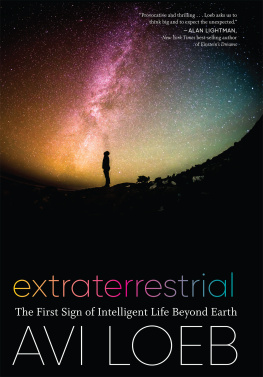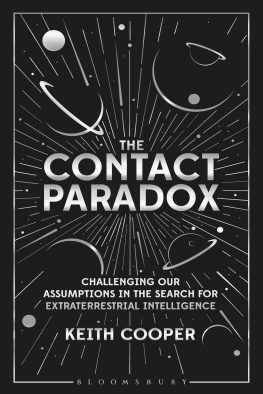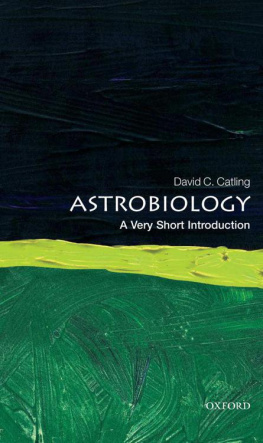Chapter 1. Introduction
Not available.
Chapter 10. Alien Bioenergetics
"And yet tis not improbable that those great and noble Bodies have somewhat or other growing and living upon them, though very different from what we see and enjoy here. Perhaps their Plants and Animals may have another sort of Nourishment there."
-- Christian Huygens, in The Celestial Worlds Discoverd; Or, Conjectures Concerning the Inhabitants, Plants and Productions of the Worlds in the Planets (1698)602
"Individuals die. However, the total amount of living matter perseveres, and even increases. We can imagine a spherical organism with the cycles of physiological processes closed completely in themselves. Such an organism will be immortal and photosynthetic, and it can develop even a higher consciousness...
-- Konstantin Eduardovich Tsiolkovskii (1934)
"Along the very light-shadow borderline were the Outsiders. Just as their plantlike ancestors had done billions of years ago on some unknown world near the Galactic Core, the Outsiders were absorbing life-energy. Their branched tails lay in shadow, their heads in sunlight, while thermoelectricity charged their biochemical batteries. Some had root-tentacles dipped in shallow food-dishes; the trace elements which kept them alive and growing were in suspension in liquid helium."
-- Larry Niven, from "Flatlander" (1967)607
Why are xenologists so concerned about bioenergetics? Bioenergetics means, simply, the study of biological energy. The engine of life, as any machine, needs a supply and a flow of energy--chemical, electrical, thermal, or whatever--to keep it running. If power is suddenly cut off, both mechanical and biological machines soon grind to a halt.
The thermodynamic definition of life discussed in an earlier chapter--that living systems "feed on negentropy" and thereby manage to maintain themselves against the universal drive to disorder mandated by the Second Law of Thermodynamics--demands a flow of energy from a source to a sink. This requirement is so fundamental to the basic character of life itself that we may confidently predict that bioenergetics will be a favorite discipline among alien zoologists and physiologists. But can we be as certain about the specifics?
The Viking Lander biology package assumed so. The Pyrolytic Release device tested for photosynthetic activity on Mars, and the other two experiments sought evidence of respiration and simple metabolism. But were these assumptions reasonable? Must lifeforms evolving under alien suns on distant worlds conform to Earthly patterns and cycles?
ETs will have met the bioenergetic challenge in many diverse and unexpectedly clever ways. Each new race independently must have evolved intriguing and totally unique methods for absorbing, storing, distributing and regulating energy. While we dont know for certain if extraterrestrial photosynthetic animals are possible elsewhere in our Galaxy, or if alien bloodstreams will run red, green or blue, or whether in some distant corner of the universe there exist "biological refrigerators" which can stabilize body temperatures on sweltering worlds as hot as blast furnaces, xenologists cannot resist the temptation to pose these and other fascinating questions.
10.1 Finding the Energy to Live
Active life requires a flow of energy between a source (a region of high energy) and a sink (a region of lower energy). To use heat energy, for example, a difference in temperature between two points in space must be maintained. A steam engine works not because it is hot, but rather because the boiler is hotter than the condenser.
How does plant life fit into this scheme? It has been said that the only reason photosynthesis works at all is that the surface of the sun is at 6000 K, whereas the surface of the Earth (and its plant life) is only at 300 K. Photons emitted at the higher solar temperature travel through space to this planet, enter the chlorophyll molecule and power the plants metabolism. Later, photons of waste heat, a form of degraded energy, are radiated off at the far lower planetary surface temperature.
Animals too need sources and sinks. The food they eat is burned by the oxygen they breathe, and this constitutes a useful source of energy. The external environment, by accepting bodily waste heat, serves as a sink.
All life on Earth ultimately depends upon one of two sources: Photons from Sol (photosynthetic organisms) and chemical energy (all nonphotosynthetic terran lifeforms). However, various other possibilities have been suggested for hypothetical alien beings on other worlds.
One widely discussed alternative involves the evolution of life on so-called "starless planets."128,816 Such worlds, if they exist, lie in the dark plumbless abyss of interstellar space far from the coddling embrace of any friendly star. Were the object large enough, say, a massive jovian or super-jovian, it might be warmly self-heating with a tepid surface crust.
Of course, we know that heat alone will not power a living organism. And it is difficult to imagine how to establish a flow of energy in an environment heated to some relatively fixed, unvarying temperature. Most writers have ruled out life on starless planets on this basis.18,22,714
Dr. Thomas Gold at Cornell University disagrees. If we consider the surface of a starless planet as a source at 300 K, he points out, then all we need to do is find a sink somewhere at a lower temperature to establish a life-giving flow.
Space is very cold, only about 2.7 K. If this or something very close to it could be used for the energy sink, then biological thermodynamic efficiencies approaching those of terrestrial photosynthesis might in principle be possible.22
Extending this idea just a bit further, Gold suggests that some alien lifeforms may base their processes on a thermal gradient in time rather than in space. Imagine a uniformly heated environment in which there was a slow but regular diurnal temperature variation. Usable bioenergy could be extracted through the use of a chemical system which coupled only to the equilibrium state established at each extreme.
At the hottest extreme, certain reactions might take place which stored energy in chemical form. This energy would then be released only when the temperature swung down to the coolest extreme. In this scheme, the source and sink are no longer coextensive in time. As temperature fluctuates, the surroundings would be first the source, later the sink, and so on.
Many other imaginative and exotic energy systems have been postulated by various writers, including geothermal heat and volcanism, piezoelectricity, solar wind ions, planetary magnetic fields, atmospheric electricity (e.g. lightning), and radioactive decay (fission power).
J.W. Ycas has come up with a novel form of energy transduction, to which he has given the formidable appellation "palirrhotrophy."2379 His organisms, should they exist, are powered by chemical osmosis. A flow of bioenergy -- an "osmotic current" -- is established "by exploiting the rhythmic variations in salinity which occur in the estuarine environment." As the palirrhotrophic lifeform is periodically flushed, first with salty seawater and later with upriver freshwater, energy is pumped into its system osmotically.
Such creatures might exist on a predominantly watery world, one with a large moon or moons and a fast rotation to make the tides frequent but brief. A tropical climate would ensure plenty of rainfall and a bountiful source of freshwater, and high gravity would cause mountain water runoff to cut deep channels and fjords to the sea -- a viable niche for palirrhotrophic ETs.
Another distant possibility is the use of mechanical energy. The waves, winds or tides might be harnessed to power a shore-dwelling alien creature. A slowly rotating planet with a massive moon in a fast orbit would have plenty of mechanical wave energy available at the surface. Yet organisms would find themselves without sunshine for such long night-time stretches that they might find it useful to evolve a biomechanical energy system as an auxiliary power supply.
Next page











